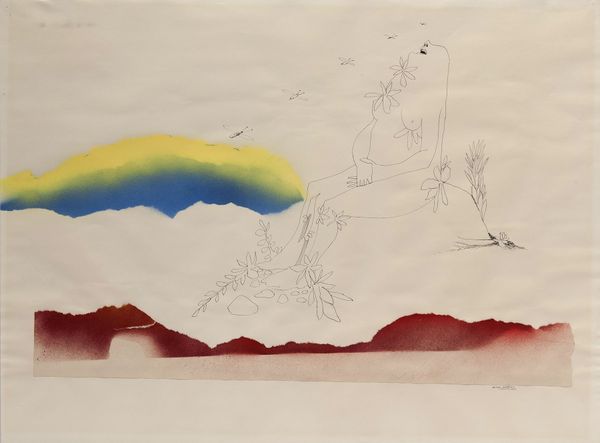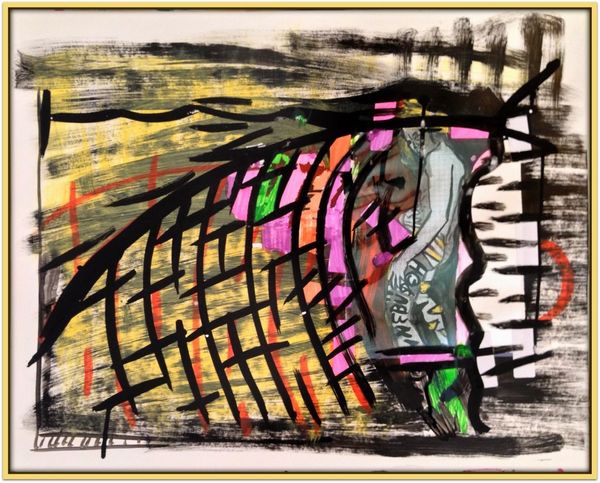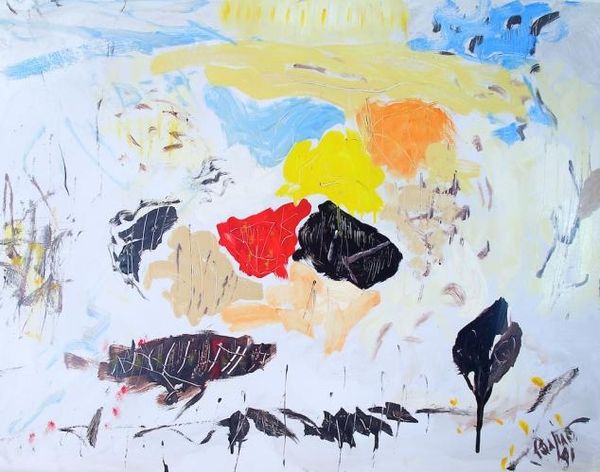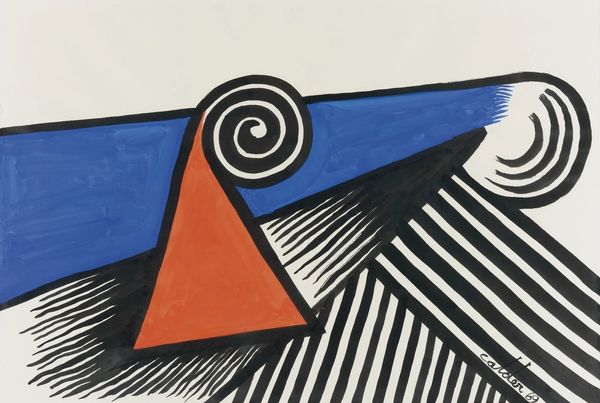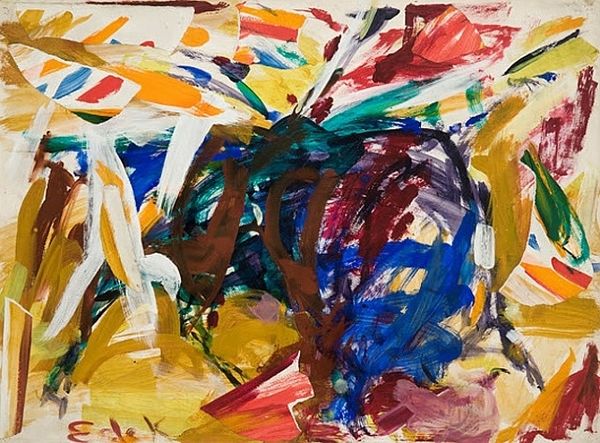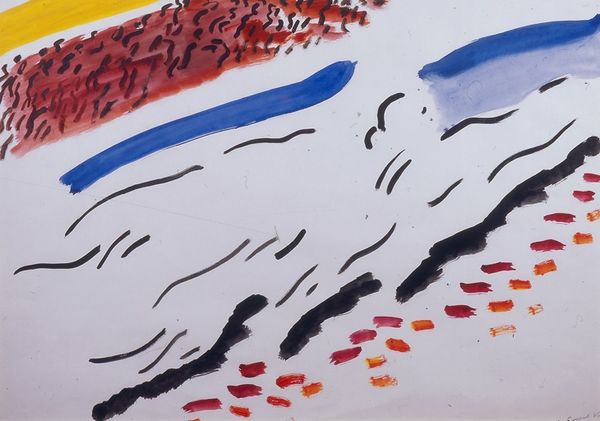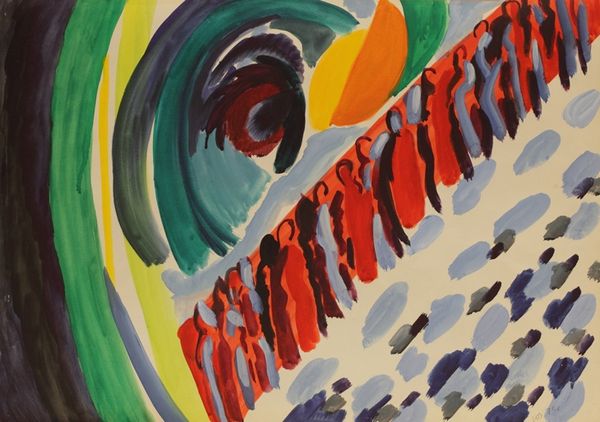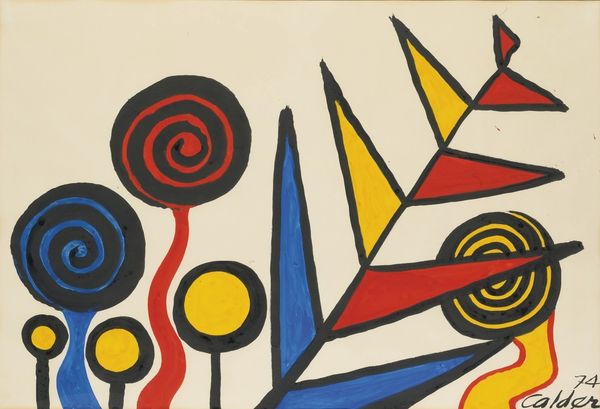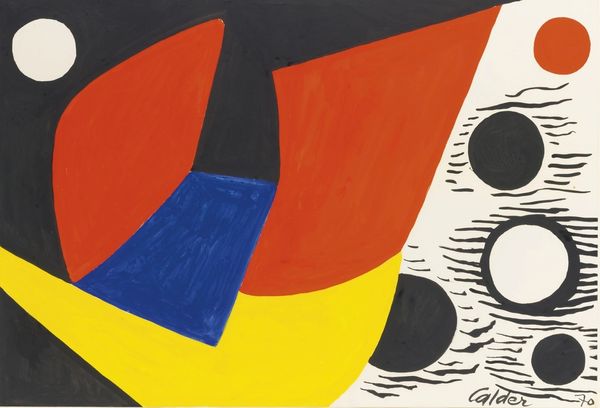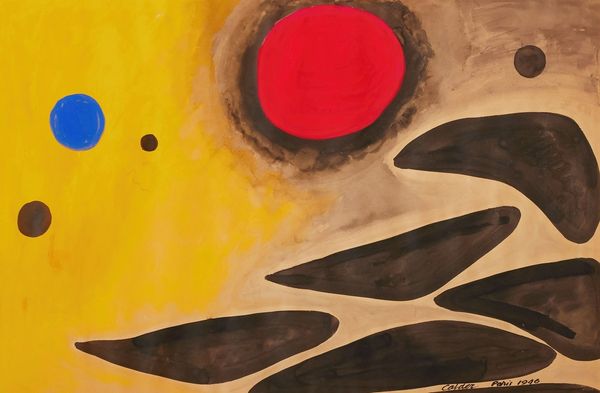
painting, acrylic-paint
#
abstract-expressionism
#
abstract painting
#
painting
#
acrylic-paint
#
abstract
#
form
#
handmade artwork painting
#
acrylic on canvas
#
line
#
painting art
Copyright: Modern Artists: Artvee
Editor: So, this is Alexander Calder's "The Black Boomerangs" from 1953, made with acrylic paint. The cheerful colors feel juxtaposed with the somewhat ominous title. I’m curious about that. How do you interpret this work? Curator: Well, let's think about the social context. The early 1950s were marked by anxieties stemming from the Cold War, even though there's a vibrant abstract aesthetic here, do you think these tensions might seep into Calder's choices, maybe subconsciously? I'm also struck by how Calder's work dances between the gallery space and the public sphere, moving, quite literally in his mobiles. How does the static nature of this painting affect your understanding of his practice? Editor: That's a great point. I hadn’t considered the Cold War aspect at all. I tend to think of his work in more formal terms – line, shape, and color. Seeing it as a reaction, however subtle, to social anxiety is interesting. Also the interplay of it being mobile to static makes you think more deeply. So it’s almost like he is using the shapes in abstract to get a different message across, but what do the shapes even mean? Curator: Indeed. His abstract forms don't lend themselves to easy interpretation, and that might be deliberate. Does Calder offer social commentary, or is it purely about aesthetics? Consider how Abstract Expressionism, more broadly, gained prominence partly as a symbol of American freedom during this period, a counterpoint to Soviet artistic constraints. Do you think this painting serves the same purpose? Editor: I see what you mean about freedom. Perhaps by focusing on purely abstract forms, artists were implicitly defending individual expression against any form of ideological control. I am now questioning my first impression now; there's more here than meets the eye. Curator: Exactly. And sometimes, asking these kinds of questions, challenging your initial understanding, is the most rewarding part of art history. Editor: Definitely. Thinking about the bigger picture helps so much. Thanks for sharing your perspective!
Comments
No comments
Be the first to comment and join the conversation on the ultimate creative platform.


